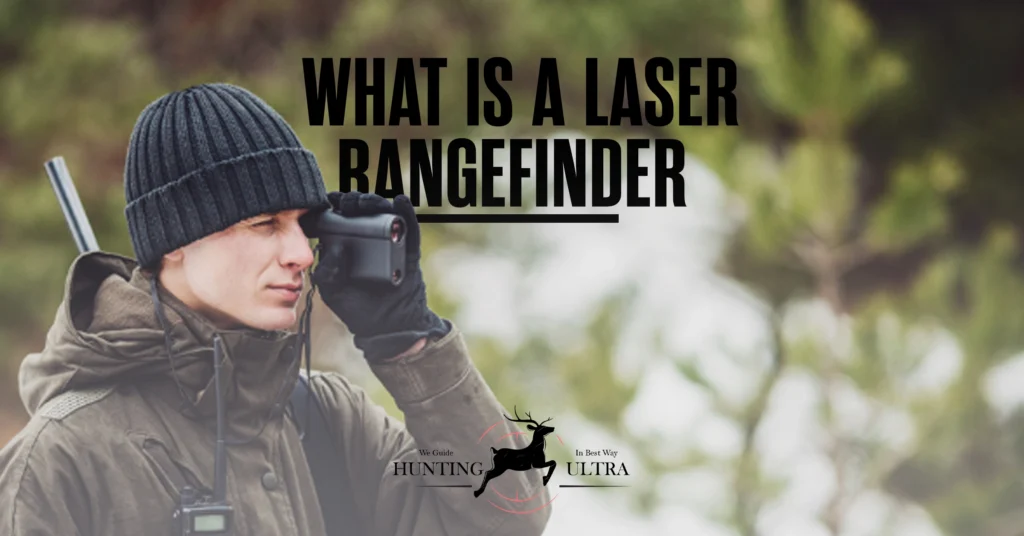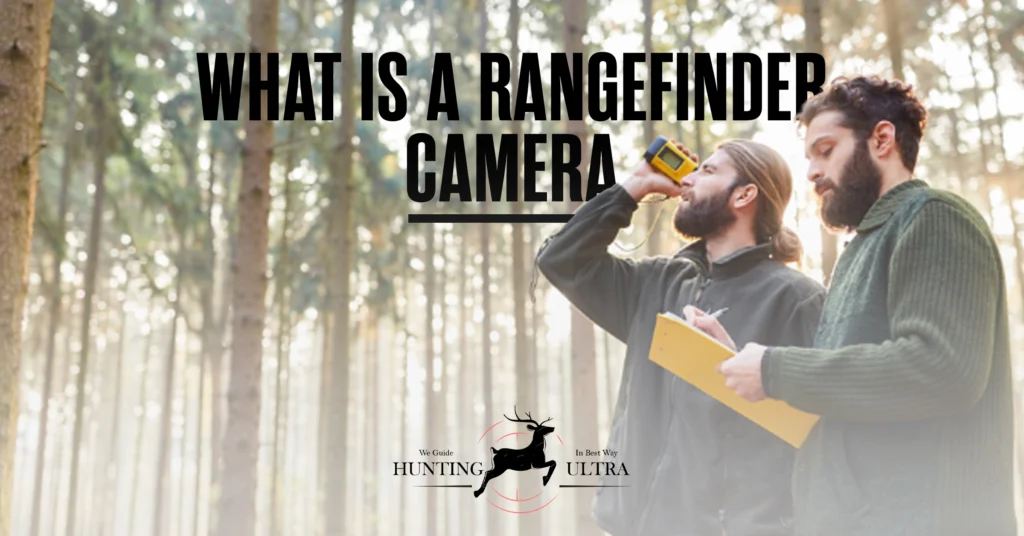So in today’s blog, we will see “what is a laser rangefinder“. A laser rangefinder is a device that uses a laser beam to measure the distance to an object. The most common type of laser rangefinder is the portable handheld type, which is used in a wide variety of applications such as surveying, forestry, mining, construction, and law enforcement. Laser rangefinders send out a laser beam in a narrow width.
The time it takes for the beam to bounce off the target and return to the sensor is measured, and from this, the distance to the target is calculated. There are many different types of laser rangefinders on the market today, each with its own advantages and disadvantages. In this blog post, we will explore some of the most popular types of laser rangefinders and help you choose the best one for your needs.
What is a laser rangefinder?
A laser rangefinder is a device that uses a laser beam to measure the distance to an object. It works by sending out a pulse of laser light and then measuring the time it takes for the light to reflect off the object and return to the rangefinder. The rangefinder then calculates the distance based on the speed of light and the time it took for the pulse to return.
Laser rangefinders are used in a variety of applications, including:
- Golf: To measure the distance to the hole and other objects on the course.
- Hunting: To measure the distance to the target.
- Construction: To measure distances between different points on a construction site.
- Military: To measure the distance to enemy targets.
- Surveying: To measure distances between different points on a landscape.
How does a laser rangefinder work?
A laser rangefinder works by sending out a pulse of laser light and then measuring the time it takes for the light to reflect off the object and return to the rangefinder. The rangefinder then calculates the distance based on the speed of light and the time it took for the pulse to return.
Here is a step-by-step explanation of how a laser rangefinder works:
- The rangefinder emits a pulse of laser light.
- The laser light travels through the air and reflects off the object that the distance is being measured to.
- The reflected laser light travels back to the rangefinder and is detected by a receiver.
- The rangefinder measures the time it took for the laser pulse to travel to the object and back.
- The rangefinder then calculates the distance to the object based on the speed of light and the time it took for the pulse to return.
The speed of light is a constant, so the distance to the object can be calculated by multiplying the time it took for the pulse to return by the speed of light.
Laser rangefinders are very accurate and can measure distances to objects that are miles away. They are used in a variety of applications, including golf, hunting, construction, and surveying. Want to read more then checkout: How Do Laser Rangefinders Work.
How to choose a laser rangefinder?
When choosing a laser rangefinder, there are a few key factors to consider:
- Range: Consider the maximum range you need for your specific application. Some rangefinders have shorter ranges suitable for golf, while others can measure much longer distances for military or surveying purposes.
- Accuracy: Different rangefinders offer varying degrees of precision. Higher accuracy is crucial for applications where precise measurements are essential, such as construction and surveying.
- Precision: Precision refers to the consistency of measurements. A rangefinder with high precision provides reliable and repeatable distance readings.
- Magnification: Optics with higher magnification can help you target objects more accurately, especially when measuring long distances.
- Field of View: A wider field of view can be beneficial when trying to locate and measure distant objects quickly.
- Size and Weight: Consider the portability and ease of handling. Smaller and lighter rangefinders may be preferable for certain activities, such as golf.
- Price: Determine your budget and find a rangefinder that offers the features and performance you need within that range.
What are the benefits of using a laser rangefinder?
There are many benefits to using a laser rangefinder. Perhaps the most obvious benefit is that you can quickly and easily find out the distance to an object. This is especially useful for golfers, who can use the rangefinder to determine how far away the hole is, or for hunters, who can use it to find out how far away their prey is.
Another benefit of using a laser rangefinder is that it is very precise. You can be confident that you know exactly how far away an object is, which can be crucial in some situations. For example, if you are trying to hit a target with a bullet, you need to know precisely how far away it is in order to make the shot.
Finally, laser rangefinders are relatively affordable compared to other types of distance-measuring devices. This makes them a great option for anyone who needs to frequently measure distances but doesn’t want to spend a lot of money on equipment. If you’re a hunter then you should need to know How To Get Deer To Come Out During The Day.
Top 5 best laser rangefinders
Here are a few of the top laser rangefinders of 2023, based on their features, performance, and reviews:
- Best overall laser rangefinder: Gogogo Sport Vpro GS03
- Best budget laser rangefinder: Vortex Optics Crossfire HD 1400
- Best laser rangefinder for golf: REDTIGER Golf Rangefinder
- Best laser rangefinder for hunting: TIDEWE Hunting Rangefinder
- Best laser rangefinder for construction: Bosch GLM 500 C Professional
- Best laser rangefinder for military use: CIGMAN Dual Laser Rangefinder
How to use a laser rangefinder
To use a laser rangefinder, simply point it at the object you want to measure the distance to and press the button. The rangefinder will then display the distance to the object on its screen.
Some laser rangefinders have additional features, such as the ability to measure distances to multiple objects or to track moving objects. To use these features, consult the user manual for your specific rangefinder.
Troubleshooting laser rangefinders
If you are having problems with your laser rangefinder, there are a few things you can check:
- Make sure that the batteries are fresh.
- Make sure that the rangefinder is clean and free of dirt and debris.
- Make sure that you are pointing the rangefinder at the object you want to measure the distance to.
- Make sure that the object is within the range of the rangefinder.
If you are still having problems, consult the user manual for your specific rangefinder.
Tips and tricks for using laser rangefinders
Here are a few tips and tricks for using laser rangefinders:
- To get the most accurate readings, hold the rangefinder steady and aim it directly at the object you want to measure the distance to.
- If you are measuring the distance to a small object, such as a golf ball, it may be helpful to use a tripod to keep the rangefinder steady.
- If you are measuring the distance to a moving object, such as a deer, try to lead the target slightly with the rangefinder.
- To care for and maintain your laser rangefinder, clean it regularly with a soft cloth and store it in a dry place.
Advanced Features to Consider
As technology continues to evolve, laser rangefinders come equipped with increasingly sophisticated features to enhance their functionality. Some models offer advanced targeting modes, such as angle compensation, which adjusts distance measurements based on the incline or decline of the terrain. This feature is particularly beneficial for hunters and golfers navigating varied landscapes.
Another noteworthy advancement is the ability to connect laser rangefinders to mobile devices through Bluetooth technology. This connectivity enables users to access additional data, store measurement history, and even integrate rangefinder information into mapping apps. When choosing a laser rangefinder, explore these advanced features to determine which ones align with your specific needs and activities.
Conclusion
A laser rangefinder is a tool that uses a laser to measure the distance between two objects. It is a very useful tool for many different applications, such as surveying, construction, and even in sports. If you are looking for a tool that can help you with any of these tasks, then a laser rangefinder is definitely worth considering. We hope your question “what is a laser rangefinder” is answered and if you still have any doubts then comment below.
FAQs
Checkout some most important FAQs related to laser rangefinders:
What are the limitations of laser rangefinders?
Laser rangefinders can be affected by certain environmental conditions, such as fog, rain, and snow. They can also be affected by the size and reflectivity of the object being measured.
How accurate are laser rangefinders?
Laser rangefinders are very accurate, typically to within a few yards. However, the accuracy of a laser rangefinder can be affected by a number of factors, including the range to the object, the environmental conditions, and the quality of the rangefinder itself.
What is the difference between a laser rangefinder and a GPS rangefinder?
A laser rangefinder uses a laser beam to measure the distance to an object, while a GPS rangefinder uses satellite signals to determine the distance to an object. Laser rangefinders are typically more accurate than GPS rangefinders, but they can be more expensive and may not work as well in dense forests or other areas with poor GPS reception.



